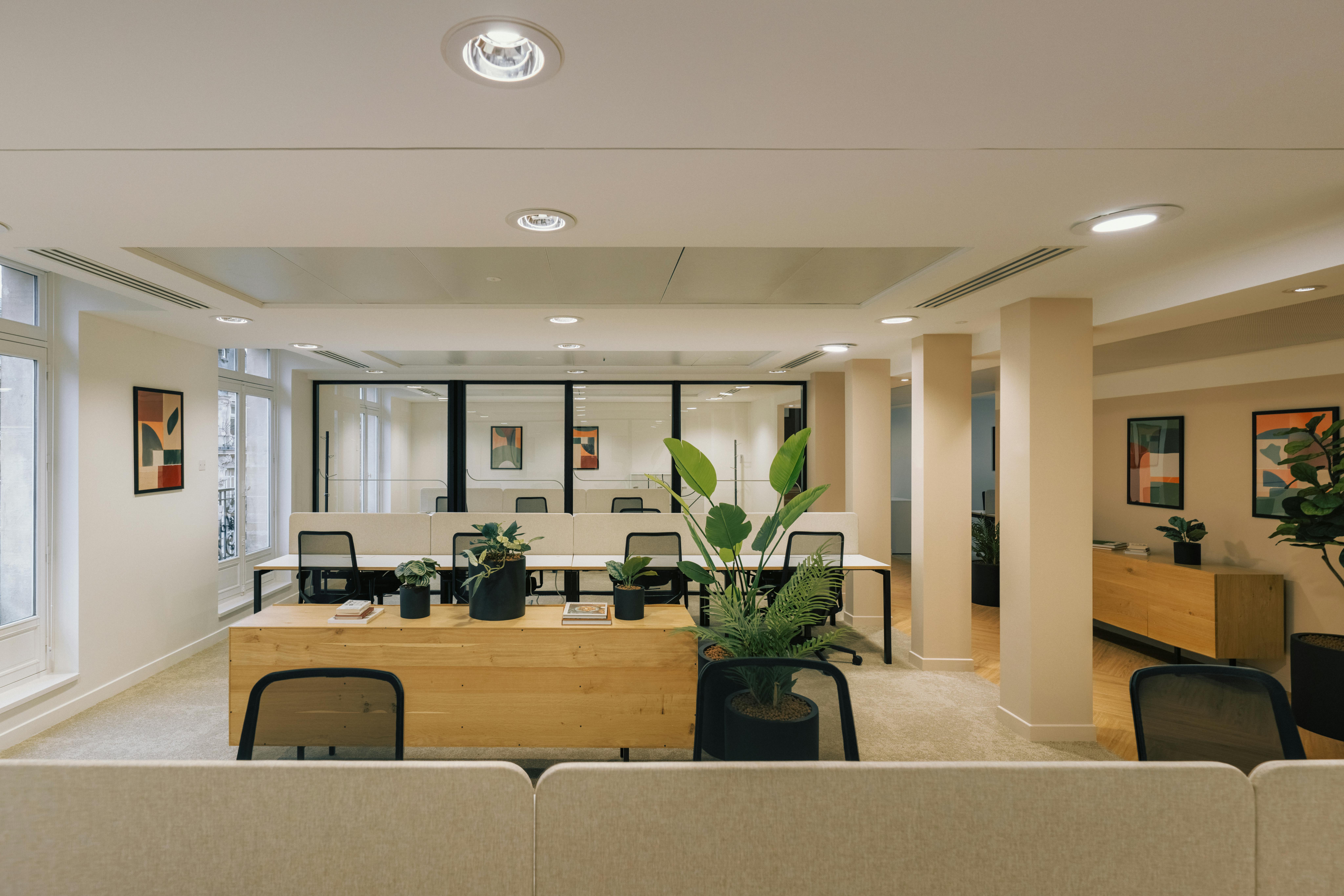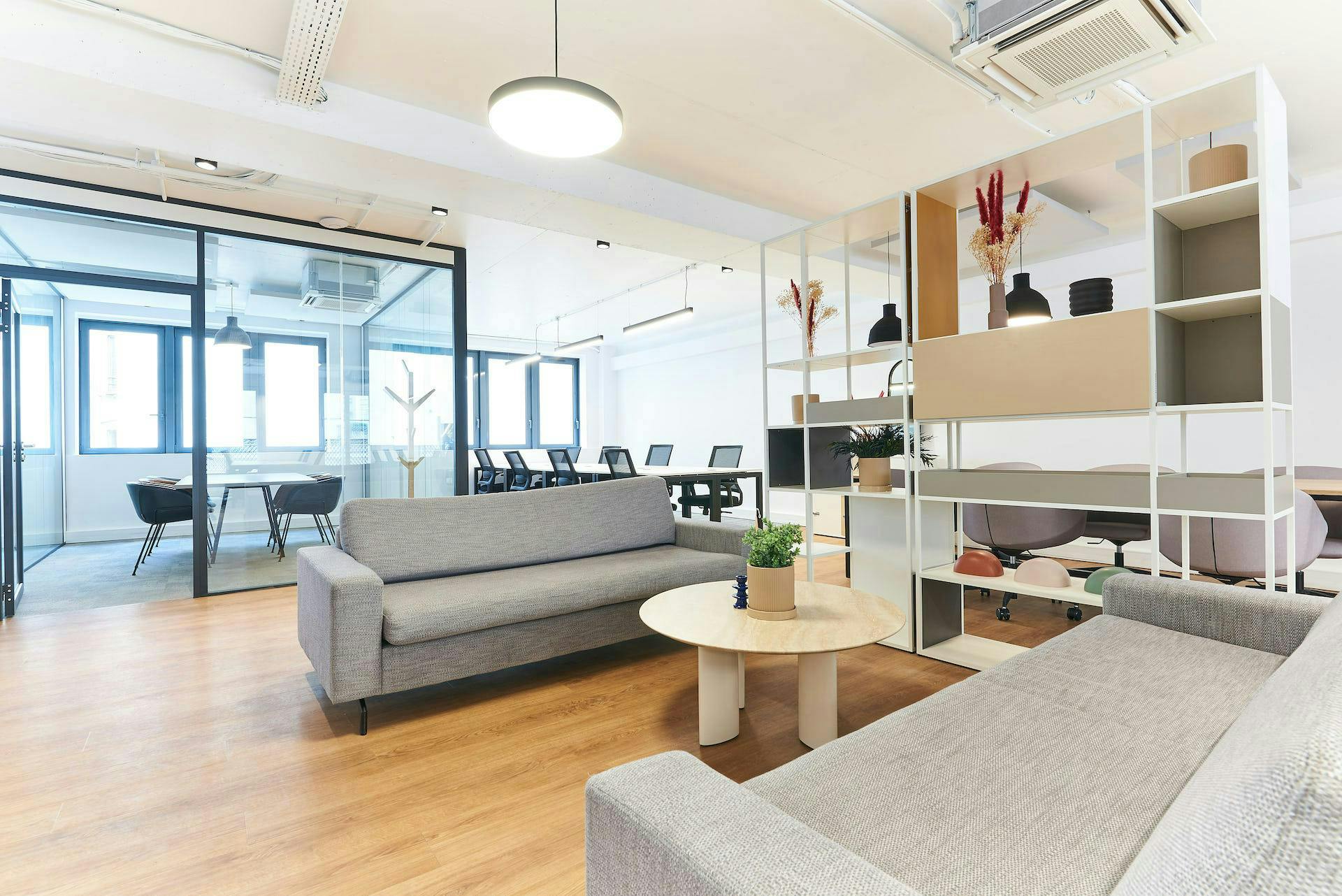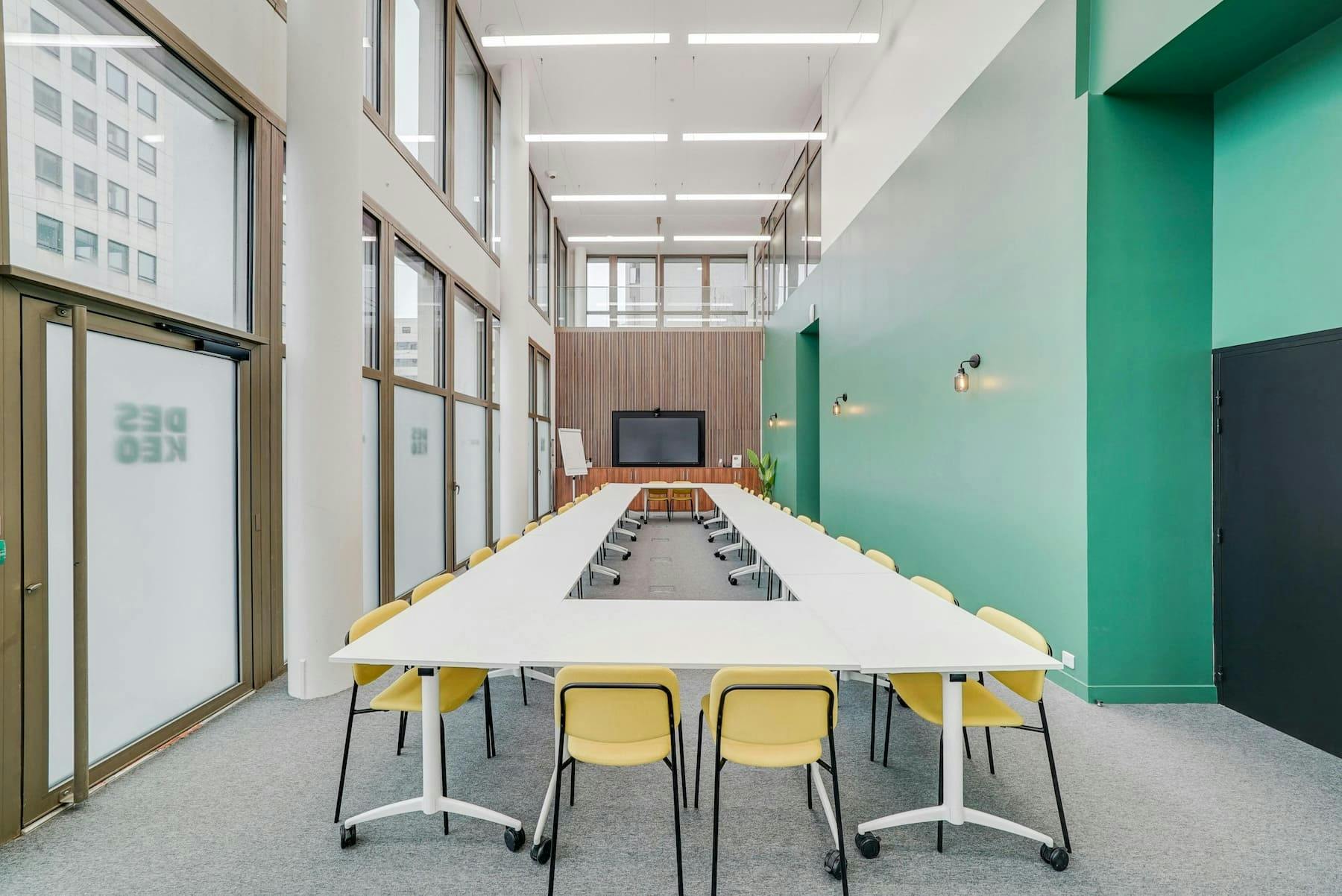

What is a collaborative workspace?
For a long time, the office was synonymous with silence, partitions, hierarchy. Today, people prefer to talk about collaboration, cross-functionality, and joint projects. Naturally, workspaces are adapting. One of the major changes in recent years? The emergence of collaborative workspaces in all kinds of companies.
But behind this sometimes overused term, what does it really mean? What is the definition of a collaborative workspace? What role do the digital environment and online platforms play in this new organisation? And above all: how do you set up an effective collaborative space, and what tools can help stimulate collective intelligence day to day? Let’s take a closer look.
Definition of a collaborative workspace
To set the stage, let’s start by explaining exactly what we mean by this. A collaborative workspace is much more than simply a shared office. It’s a workplace designed to encourage the active participation of employees within a group. It fosters cooperative working, information sharing, task management, and the creation of shared value.
It takes many forms: a carefully designed physical area, open space, a dedicated collaboration zone, or even an online collaborative platform. Most often, it relies on a blend of digital tools and physical spaces adapted to new ways of working. The aim is to encourage interactions, internal communication, and the capacity for colleagues to solve problems collectively.
Common misconceptions about collaborative spaces: a closer look
Before we get to the heart of the matter, let’s quickly address some of the misconceptions around this model. Because there are plenty when it comes to collaborative spaces — so let’s sort fact from fiction together...
Myth 1: A collaborative space is just an open-plan office with a few plants. ➡️ False. Open plans can be part of a collaborative space, but it’s neither sufficient nor compulsory. What matters is the balance between open zones, quiet corners, meeting rooms and informal areas.
Myth 2: Everyone works together, all the time. ➡️ Not really. Collaborative working doesn’t mean you’re always in a group. It’s about moving between solo, pair, or group work depending on the needs. The variety of scenarios is the strength of the model.
Myth 3: You lose confidentiality in a shared space. ➡️ Not necessarily. Thoughtful layouts, acoustic pods, and spaces dedicated to private calls or meetings help maintain peace and comfort for everyone.
Myth 4: It’s mostly for startups or creative agencies. ➡️ No. Increasingly, companies across all sectors — including more traditional environments — are adopting these spaces to encourage engagement, innovation, and cross-team collaboration.
Myth 5: There are no rules, everyone just does what they want. ➡️ On the contrary. A good collaborative work environment relies on shared ground rules, carefully chosen tools, and ongoing facilitation. It’s structured, but not rigid.
In short, a collaborative space is not a fad or window-dressing. It’s a working model designed to generate ideas, facilitate communication, and create connection every day. And when it’s done right, the results are visible: more efficiency, smoother workflow, and greater enjoyment working together.
How do you set up a collaborative workspace?
To create a true collaborative workspace — a place where exchanges happen naturally, where people actually want to come together to work — there are a few key factors. And it’s not just about the decor.
1. The physical layout
Let’s start with what we see (and experience) every day: the offices. Here are a few layout ideas to lay the foundations for a truly collaborative space:
- Open zones, where colleagues can talk without feeling like they’re disturbing others
- Well soundproofed meeting rooms
- Modular furniture, so a meeting corner can easily become a solo workspace
- Quiet areas for focusing when real concentration is needed
- Hot desks or a flex office approach, for more freedom and functionality
- And maybe even a coworking spirit, with relaxation areas, shared spaces, a real company living area
To go further on agile space organisation, read our article on Workplace Strategy.
2. And the tools?
Because a good collaborative space is also about what happens online. The digital environment plays a pivotal role, especially with remote work or dispersed teams.
Here’s what you often find in workplaces where collaboration thrives:
- A collaborative platform to track project progress (like Notion or Trello)
- Shared working tools (thanks Google Drive and similar)
- Reliable instant messaging (Slack, Microsoft Teams…)
- Well integrated video conferencing tools (essential to create a hybrid collaborative space)
What are the benefits of collaborative working?
A great looking space is all very well. But if everyone just stays in their own bubble, there’s no point. The aim is to create a real team dynamic, tailored to the company’s needs.
1. A real productivity boost
Things move faster when everything’s at hand, communication is easy, and you can run an idea past someone without having to organise a meeting.
2. Smoother internal communication
No more endless email chains. In a collaborative space, voices are heard. And with them, essential information is shared between colleagues.
3. A team that works as one
Sharing a space, working towards a common goal, having regular exchanges: these create bonds and help to strengthen the cohesion of teams. Collaborative work is also part of a logic of quality of life at work, which is now central to attracting and retaining talent.
4. More fresh ideas
When people talk to each other, ideas flow. Teamwork doesn’t replace individual talent, but it does amplify it.
How do you implement a collaborative workspace?
You can’t change a work culture overnight. Here are some key steps for ensuring the rollout of a collaborative workspace goes smoothly:
1. Start by observing
Take time to see how teams work, what the blockers are, what could be improved. In short, focus on your employees’ real needs.
2. Involve the teams
No one likes change imposed on them. It’s better to create a space with the people who’ll be using it every day. Getting employees involved is a key to success. And don’t forget to leave room for experimentation: test, adjust, improve
3. Think hybrid
The office is only part of it. You also need to think about digital tools and how they work alongside physical spaces.
4. Don’t forget support
New office, new routines. The key is to explain, reassure, and highlight the shared benefits for the company.
Which tools for collaborative working?
Without the right tools, even the best space will go underused. Here are a few tried and tested solutions:
- Microsoft Teams: messaging + video conferencing + shared documents = the winning trio
- Google Drive: simple, efficient, collaborative by nature
- Slack, for quick exchanges (and gifs that make you smile)
- Notion, Trello, Asana: each has its own style, but all make project management and group task tracking easier
Tip: test them with your teams. The best tool is the one people want to use every day.
How do you encourage collaboration at work?
A good tool isn’t enough. The right mindset is essential. You’ll need to adapt it to your company, of course — but here are some straightforward and effective ways to foster real collaboration at work:
- Set up simple but effective routines (a team check-in every Monday, an informal get-together each month…)
- Highlight group achievements
- Create opportunities for spontaneous interaction
- Value employees who help move the team forward
- Adjust your work organisation based on feedback and real data
What does this look like at Deskeo?
We create collaborative workspaces that reflect real team life and the needs of businesses. Not just concepts imposed from above. Our layouts always include collaboration zones, quiet spaces, and services designed to streamline workplace collaboration, all in strategic locations.
We start by listening to how people work, then build from there. The idea is to optimise every square metre in the service of people, flexibility, and performance.
Want to see what this looks like in practice? Take a look at our completed projects. And if you have a project in mind? Let’s talk with our Design & Build team!
To sum up
A well-designed collaborative workspace is:
- An environment that encourages exchanges
- A driver for productivity and team spirit
- An agile solution to meet the needs of modern businesses
- A place that respects each employee’s needs while boosting efficiency
- An arrangement agile enough to evolve flexibly
But above all, it’s a mindset: building something together, daring to share, and making the workplace a genuine hub for collective life.

Contact Us
We find your Perfect fit!

